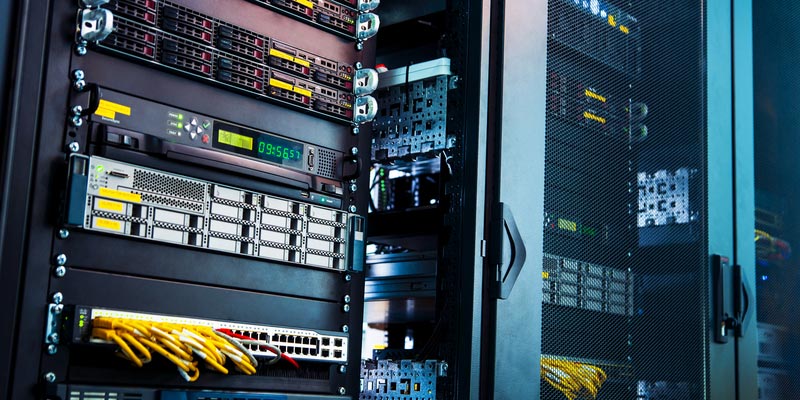The number one server room mistake is forgetting to factor in cooling tactics, or underestimating just how much heat a server room can produce. So much heat, in fact, that central AC systems are not always fit for the job. Plus, if the system uses a centralized thermometer, you’ll have to keep the rest of the building on ice in order to maintain healthy temperatures in the server room.
A server room is hot by nature. After all it’s filled with electronics that are constantly running and producing heat. This generation of heat can easily get out of hand if the room is not regulated with additional air conditioning of some type. It is very common to add a portable AC unit to server rooms, even if it’s in a building with central air. This provides specialized cooling required by server rooms.
It can actually be more affordable to operate a secondary AC unit than to try and use the central system to adequately cool off a server room. The server room is way hotter than any other part of the building and so in order to cool it off, the thermostat needs to be set way below what most would consider comfortable.
The ideal temperature for a server room is between 68 and 71 degrees Fahrenheit, albeit Google has publicly claimed to keep their server rooms as hot as 80 degrees. As long as the server room does not exceed 82 degrees, all should be fine.
There are different types and sizes of portable AC units. Allow our team of friendly technicians to pair you with the right generator for your needs.
Other common mistakes that will reduce cooling system capabilities:
Not Using Rack Cabinets
Rack cabinets offer more than just mechanical support to your servers. The gaps in these racks are specially engineered to promote greater airflow of exhaust air. Without gaps in cabinetry, the pressurized exhaust air is propelled backwards by the suction of the equipment intake. As a result, much of the exhaust air ends up flowing back into the equipment intake. Blanking panels increase the size of the air recirculation path, reducing the amount of hot exhaust air the equipment takes in.
The design of rack cabinets are so important, including the blanketing panels as well as the size of the racks, direction the rack faces, and so forth.
Too Many Servers, So Little Space
Cramming too many servers in one room can lead to excessive heat production that is nearly impossible to cool down. Maintain adequate gaps between your servers so that they have space to breathe. There’s no exact formula for ‘this many servers can fit in this size space.’ It’s not just square footage but overall usability and design of a space, as well as the cooling capacity available.
Leaving Server Room Windows Open
A single window can let in a lot of sunlight and heat. Covering windows with blackout blinds helps keep your server room cooler without spending as much money on cooling costs.
Failing To Reduce Humidity Levels
The higher humidity levels are in your server room, the more money you will spend on electrical costs cooling the place. By simply lowering relative humidity levels to 35%, instead of 45% or 50%, you’ll save a lot of water and energy. Plus, high humidity levels are bad for server equipment and increase the risk of overheating or shorting.
Forgetting To Leave Room For Growth
Don’t dismiss the importance of leaving room for future growth. You may need more servers in the near future. Set up your server room so that you have somewhere to put additional servers as needed without overcrowding the room.
Portable AC Is Too Small
If a portable AC unit does not have adequate power to cool a room, it’ll end up running constantly and never really cooling off the space.
Portable AC Is Too Big
If you’re ever in between sizes, it’s always best to go up. But if a unit is much too powerful for a space it is actually counterproductive.
Portable AC Units For Rent & Sale In South Florida
Without a portable AC unit your server room could easily overheat way past 83 degrees F. Once temperatures spike this high, servers are at risk for overheating, short-circuiting and potentially losing valuable data. We’d love to help you outfit your server room with the proper cooling equipment. Contact us today to learn more.

